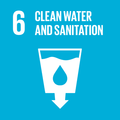Bringing algae from pond to production, ALGIX utilizes algal blooms to produce biodegradable 3D-printing filaments, which requires less energy during production and during the printing process.
ALGIX harvests microalgae to create various products, including 3D filaments and plastic foam. The company removes algal blooms from ponds and lakes without causing harm or disturbance to fish and plant life. The algae are dried and processed before being combined with plastic resins for filament production.
The filament for 3D printing has an algae content of 20%, while the remaining 80% is made from PLA, a nontoxic resin made of lactic acid derived from plant sugars. In 3D printing, algae-based filament requires less energy to print than filament because it prints at a lower temperature.
Why you should care
Harmful algal growth, known as an algal bloom, is becoming increasingly prevalent. At the same time, the world’s plastic consumption continues to increase. The number of 3D printers alone is forecast to exceed 5.6 million units by 2019. By creating an algae-infused biodegradable filament for the rapidly growing 3D printing industry, ALGIX utilizes a vast and sustainable resource to make 3D printing filaments more environmentally friendly.
How the Global Goals are addressed

Clean Water and Sanitation
By harvesting harmful algal blooms, ALGIX helps to clean water sources used for domestic consumption.
Responsible Consumption and Production
By including the renewable resource of algal biomass in their plastics, ALGIX produces more sustainable bioplastics.

Life Below Water
Algal blooms can starve aquatic ecosystems of oxygen, reducing biodiversity and fish numbers through eutrophication. ALGIX utilises these blooms, helping to protect freshwater aquatic environments.



